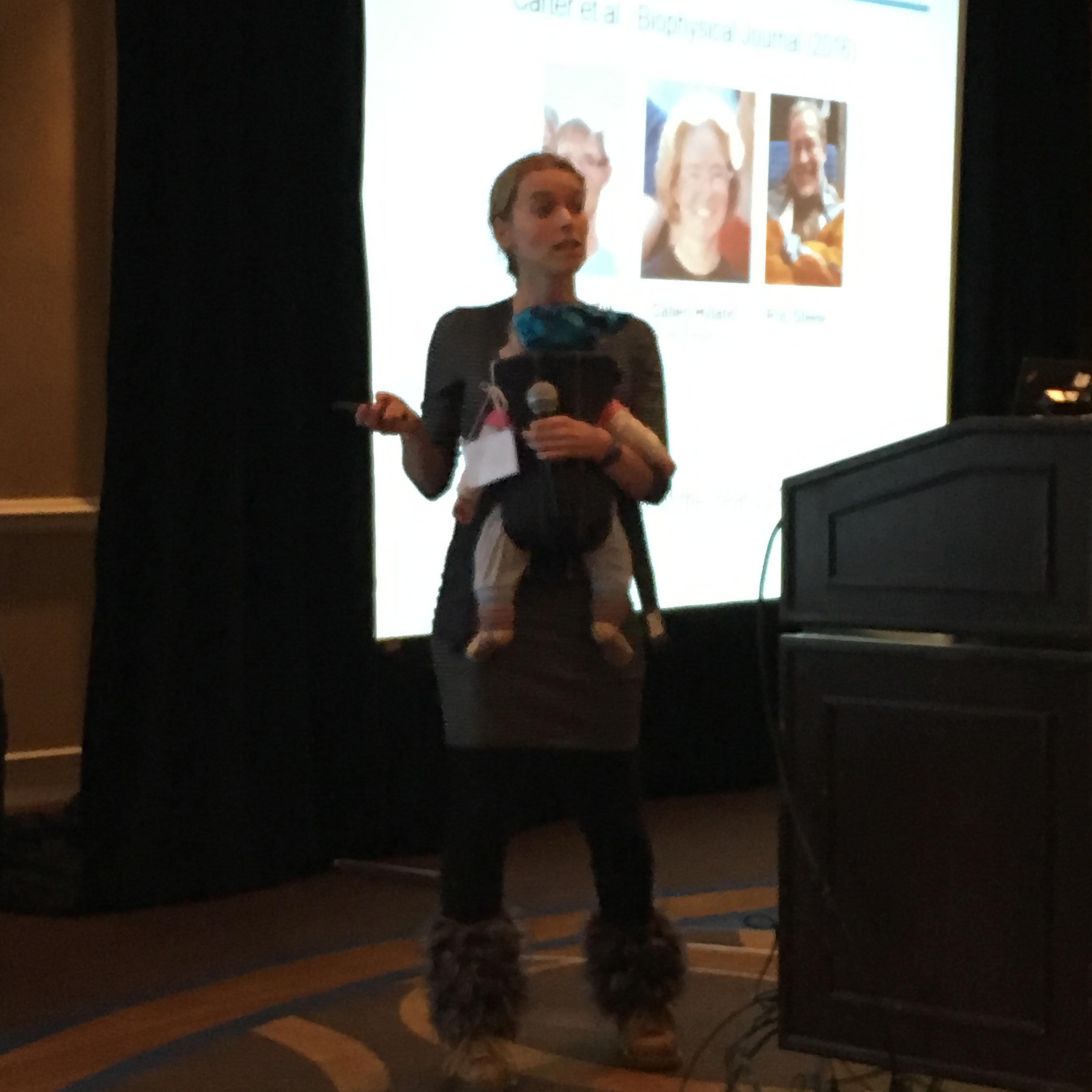

About 200 researchers got their new year off to an exciting start at Dynamics Days 2017 in Silver Spring, MD, USA. The 36th iteration of the annual conference was hosted at the Sheraton Silver Spring Hotel from January 4–6 by the Institute for Research in Electronics and Applied Physics at the University of Maryland, College Park. The meeting brought together researchers from a wide variety of disciplines—including physics, mathematics, biology, chemistry, neuroscience, and engineering—to discuss recent developments in nonlinear dynamics.
Danielle Bassett (University of Pennsylvania) kicked off the gathering by describing the development of controllability of brain networks in children. Her group’s study of diffusion imaging experiments show that the network of white matter (which acts as the brain’s transmission wires) evolves as a child ages to increase local specialization (i.e., modal controllability). Their simulations, performed by randomly rewiring the brain network of a real 8-year-old child with a preference toward increasing modal controllability, amazingly reproduced a qualitatively accurate evolution of the white matter structure as the child aged.
Following the morning coffee break came the first of two Ignite sessions. These sessions offered an opportunity for young scientists to present their work in the form of 5-minute, automatically-advancing PowerPoint presentations. The Ignite talks were remarkably well-done, certainly due to the quality of the speakers, with perhaps an assist from the intimidation provided by Ignite’s unconventional format. Each Ignite session consisted of ten talks, followed by a group question-and-answer session.
Flavio Fenton (Georgia Tech) opened the Thursday morning session by illustrating spiral waves in the human heart through both optical mapping experiments and highly parallelized GPU simulations. Spiral waves, if broken up, can lead to ventricular fibrillation, which is often deadly. He also discussed experiments, simulations, and theory that suggest that T wave alternans is a period-doubling bifurcation in heart dynamics.
Thursday’s proceedings were closed by Eva-Maria Schoetz Collins’ (UC San Diego) talk “Ripping Yourself a New One: Dynamics of Mouth Opening in Hydra.” The hydra, which does not have a permanent mouth, rips open a hole in its body each time it eats. Schoetz Collins showed that the mechanism behind the mouth opening is similar to the one that controls the size of the human pupil.

Eva-Maria Schoetz Collins delivers “Ripping Yourself a New One: Dynamics of mouth Opening in Hydra”
with the assistance of her young child.
Jürgen Kurths (Potsdam Institute for Climate Impact Research) described his group’s application of techniques from network science to weather and climate prediction. They analyze climate data from hundreds of locations across the world in order to reconstruct a network of global circulation patterns. By applying concepts from event synchronization, they were able to predict the onset and withdrawal of the Indian summer monsoon two weeks further out than traditional forecasting methods while maintaining a 74% accuracy rate.
While Kurths argued that extreme rainfall events are predictable, he demonstrated that clearly he is not: at the beginning of his presentation, he pulled off his dress shirt — Superman-style — to reveal a “Chaos” T-shirt. Kurths, the new Editor-in-Chief of the journal Chaos, was promoting the new Fast Track format, which promises a final decision on submissions in 30 days or less!
Takashi Nishikawa (Northwestern) spoke about networks of identically coupled oscillators that exhibit identical synchronization only when the oscillators themselves are non-identical. Nishikawa suggested that this so-called ``asymmetry-induced synchronization'' is in some sense the converse of a chimera state: While a chimera state arises from symmetrically-coupled identical oscillators through a symmetry breaking in the dynamics that results in regions of coherence and incoherence, asymmetry-induced synchronization occurs when identically synchronized (symmetric) dynamics can be stabilized only when the symmetry of the network structure is broken by making the oscillators non-identical.
Dynamics Days 2017 also included excellent invited talks by James Langer (UCSB), Derek Richardson (Maryland), Istvan Szunyogh (Texas A & M), Woody Shew (Arkansas), David Levermore (Maryland), Yan-Yu Liu (Harvard), Chris Jarzynski (Maryland), and Mason Porter (UCLA), along with contributed talks by Jim Yorke (Maryland), Ken Showalter (West Virginia), and Tom Carroll (U.S. Naval Research Laboratory), among others. In all, 48 talks and 95 posters were presented during the three-day event.
On behalf of all who attended Dynamics Days, I’d like to thank the organizing committee — Enest Barreto, Brian Hunt, Ed Ott, Wolfgang Losert, Lou Pecora, Raj Roy, and especially Dan Lathrop, Daniel Serrano, and Michelle Girvan — for all their hard work in putting together a fantastic conference.